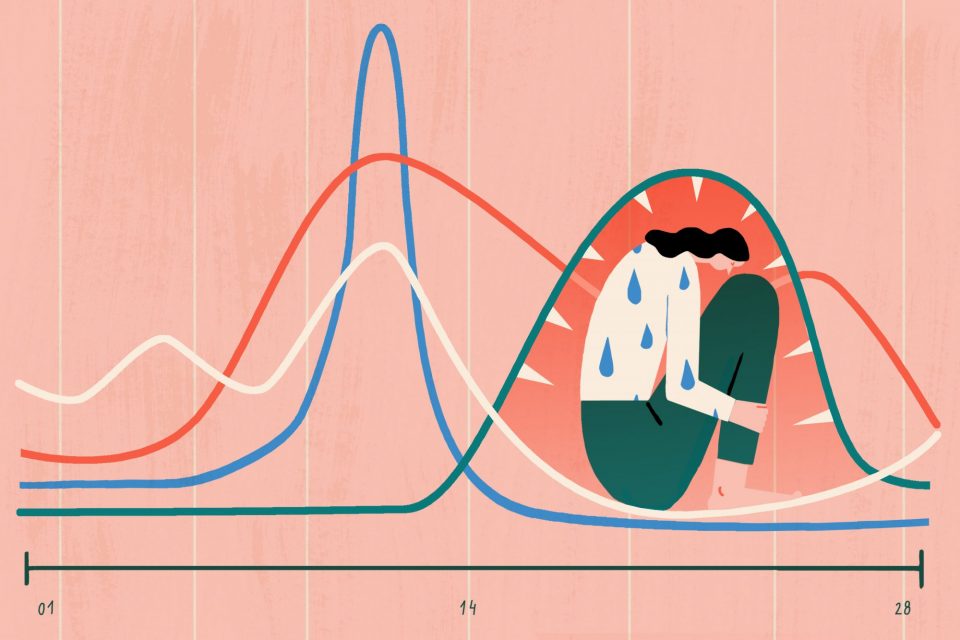Premenstrual Dysphoric Disorder (PMDD) is a health condition similar to premenstrual syndrome (PMS) but more severe. This condition causes severe depression, tension, irritability, or anxiety in a week or two before your periods. These symptoms usually disappear two to three days after the period begins. In some cases, one may require treatment or medicine to help with the symptoms. PMDD usually affects around 5% of women of childbearing age. Below is everything you need to learn about PMDD.
Causes of PMDD
The precise cause of PMDD or PMS is not yet ascertained. It is thought to be an abnormal reaction to regular hormonal changes that occur with every menstrual cycle. These hormone changes cause a serotonin deficiency. Serotonin is a substance that occurs naturally in the intestines and brain, narrowing the blood vessels, which can cause physical symptoms and affect mood. Other research suggests that the increased sensitivity to hormonal changes levels could be a result of genetic variations.
Risk factors for PMDD
While any woman can develop PMDD, the following women could be at a higher risk:
- Women with a family or personal history of mood disorders, postpartum depression, and depression.
- Other risk factors include cigarette smoking and lower education.
Symptoms of PMDD
PMDD symptoms manifest during the week before menstruation and disappear within a few days after the period starts. These symptoms can disrupt your day-to-day activities and affect home functioning, work, and relationships during this time. Below are some of the most common symptoms of PMDD:
Gastrointestinal symptoms
- Abdominal cramps
- Constipation
- Vomiting
- Nausea
- Bloating
- Backache
- Pelvic heaviness or pressure
Neurologic and vascular symptoms
- Muscle spasms
- Heart palpitations
- Numbness or heightened sensitivity of the legs or arms
- Fainting
- Headache
- Dizziness
- Easy bruising
Eye complaints
- Vision changes
- Eye infection
Respiratory problems
- Infections
- Allergies
Fluid retention
- Breast pain and fullness
- Diminished urine output
- Periodic weight gain
- Swelling of the feet, hands, and ankles
Psychological Symptoms
- Agitation
- Suicidal feelings
- Lack of energy
- Reduced interest in activities you enjoyed
- Anger
- Depression
- Difficulty in concentrating
- Irritability
- Insomnia
- Nervousness
- Forgetfulness
- Paranoia
- Poor self-image
- Trouble sleeping
- Anxiety
- Severe fatigue
- Confusion
- Moodiness
- Crying spells
Other symptoms
- Hot flashes
- Food cravings
- Reduced sex drive
- Painful menstruation
- Decreased coordination
- Appetite changes
How PMDD is treated
PMDD is a chronic and serious condition that shouldn’t be ignored. It should be treated immediately using these approaches that can help decrease or relieve the severity of the symptoms:
- Regular exercise
- Stress management
- Changes in diet to increase carbohydrates and protein and decreasing alcohol, caffeine, salt, and sugar.
- Vitamin supplements such as calcium, vitamin B6, and magnesium
- Anti-inflammatory medicines
- Birth control pills
- Selective serotonin reuptake inhibitors (SSRI)
For certain women, the severity of the symptoms may increase over time until menopause. Therefore, they may need treatment for a longer period. The condition usually is defined as an endocrine disorder meaning that hormones influence it. However, it has recently been categorized as a health problem in the DMS-5. This is due to the numerous mental health symptoms such as suicidal feelings and depression.



1 comment
I am always browsing online for posts that can facilitate me. Thank you!